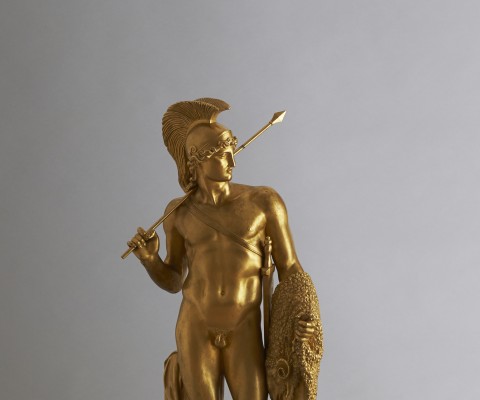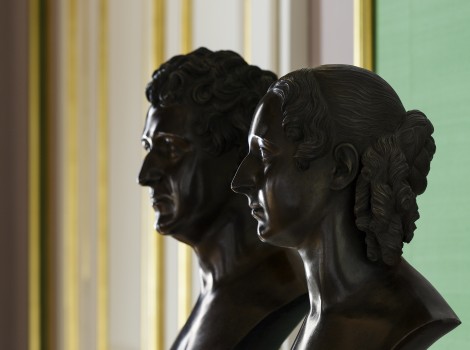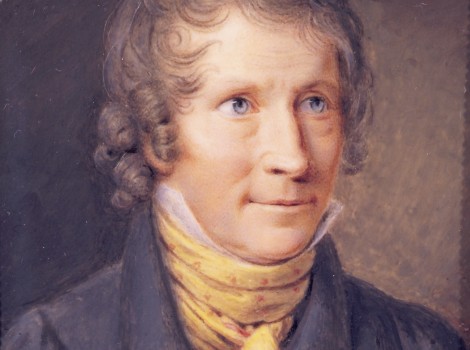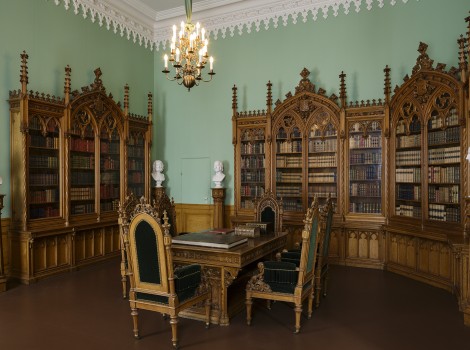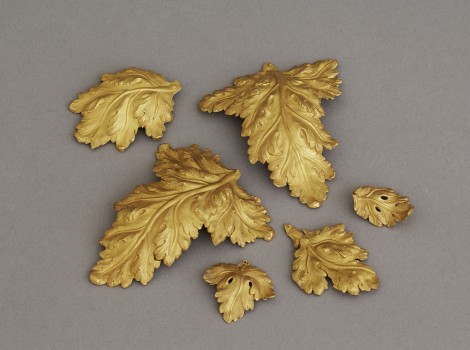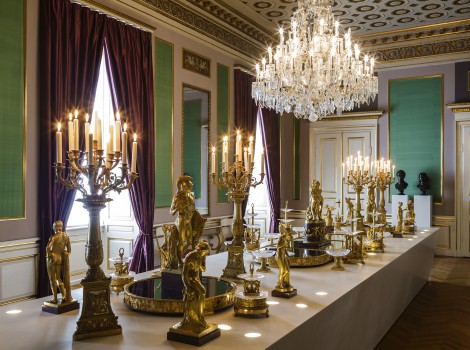Jason with the Golden Fleece
The Golden Tableau comprises eleven miniatures of classical statues, of which ten are by Bertel Thorvaldsen, and the eleventh by his pupil, Pietro Tenerani. Jason with the Golden Fleece from 1803 was Thorvaldsen’s breakthrough work, which made it possible for him to establish himself as an artist in Rome after his studies. Like the other bronze copies, it was modelled by Pietro Galli at the beginning of the 1820s and cast in bronze by Wilhelm Hopfgarten.
The figure expresses heroism and masculine strength, which is a little curious for a statue of Jason. In ancient mythology Jason was the son of a king who had been ousted, and in order to regain his father’s throne he had to embark on a perilous journey to capture a golden ram’s fleece, which he succeeded in doing with the help of Medea, the daughter of a king who was a sorceress. But because he was dependent upon the help of a woman Jason wasn’t seen as a particularly heroic figure, which he has clearly become in Thorvaldsen’s interpretation.
 Dansk
Dansk
 English
English
 Deutsch
Deutsch

